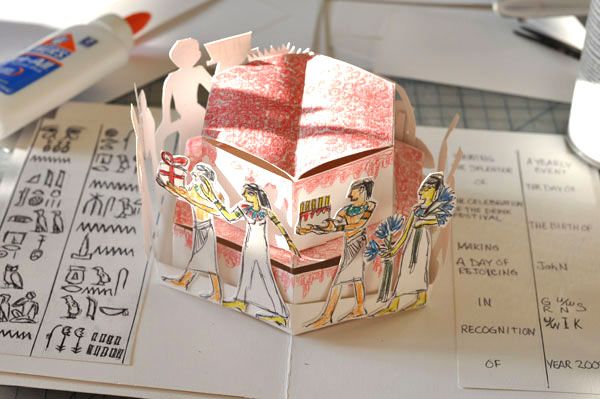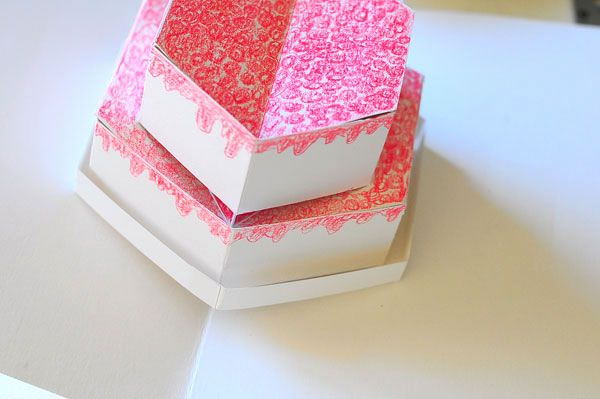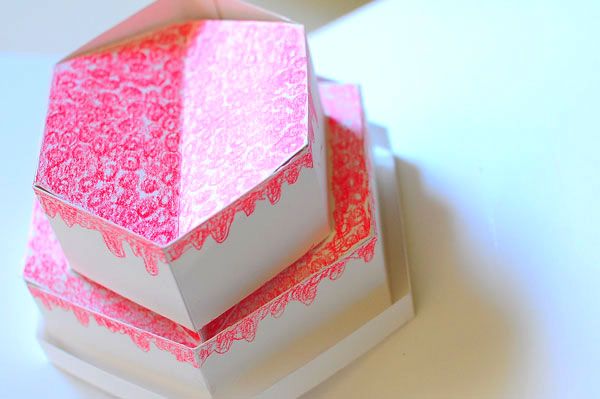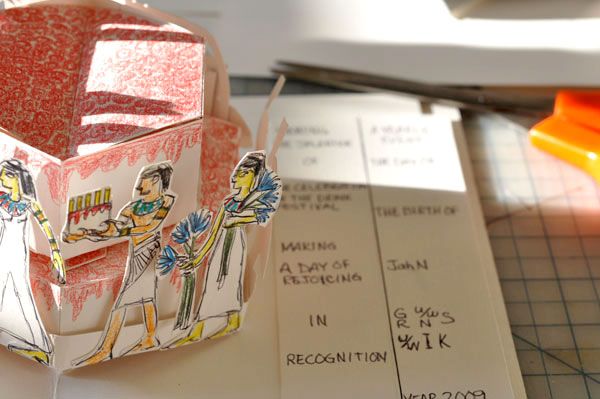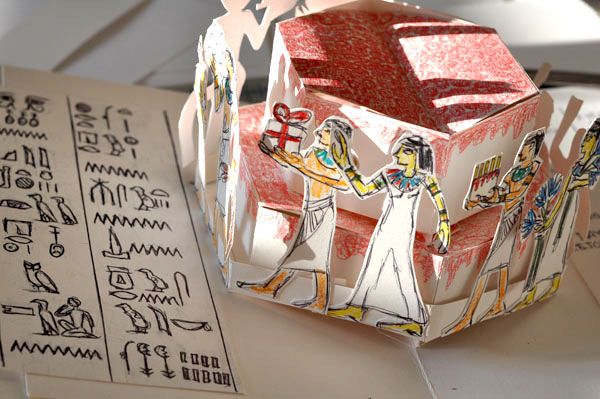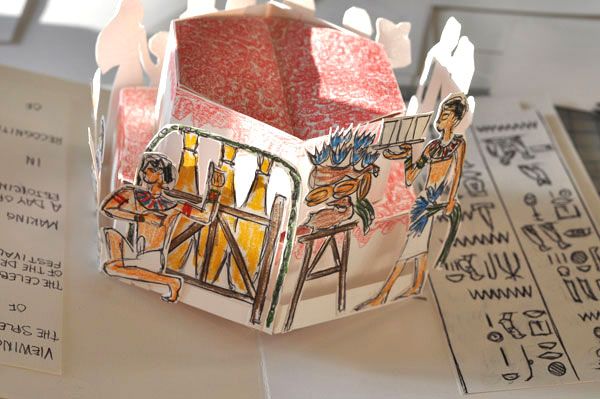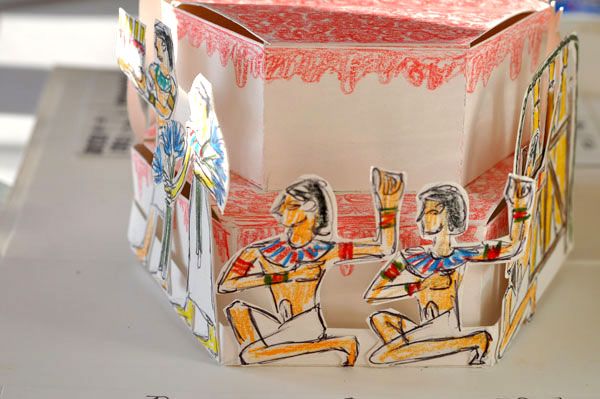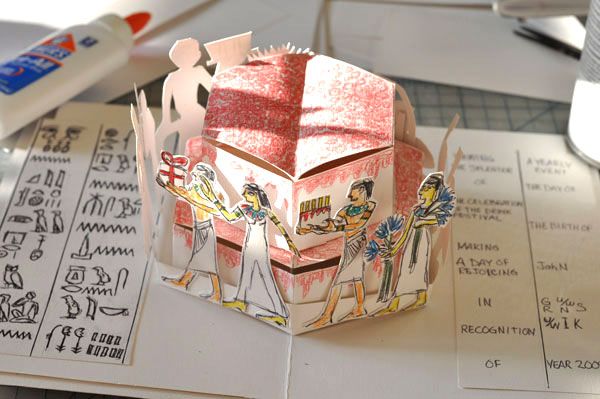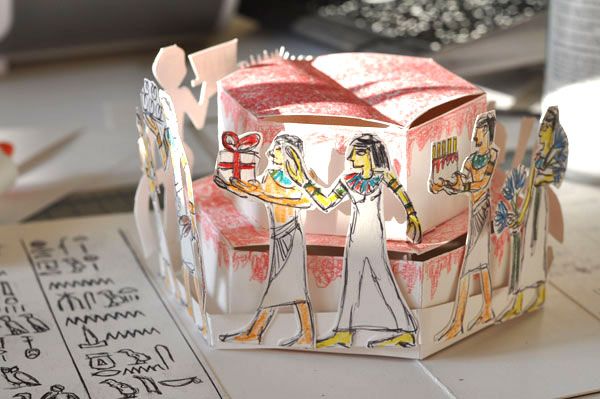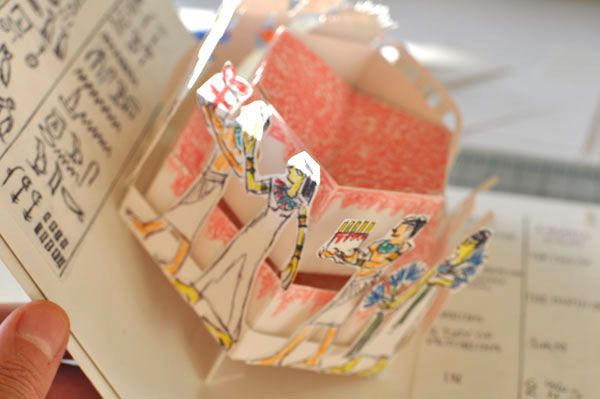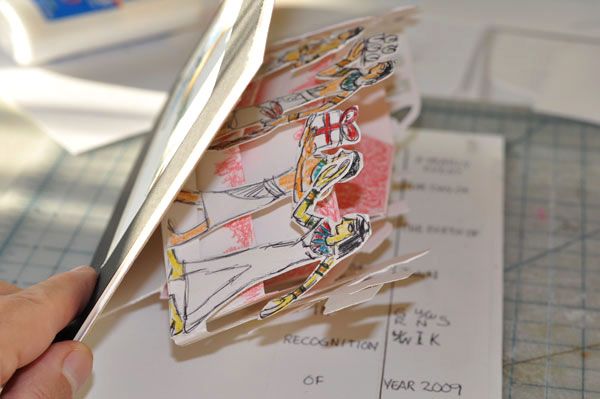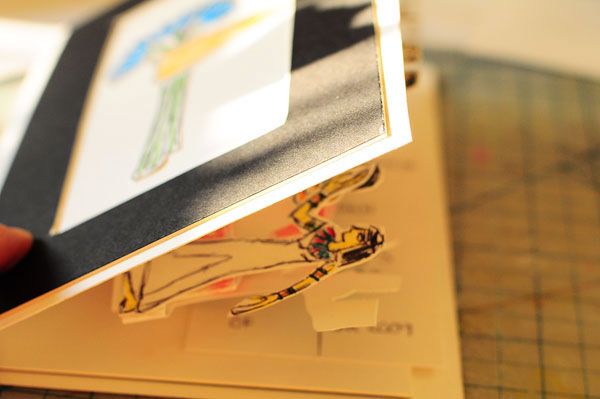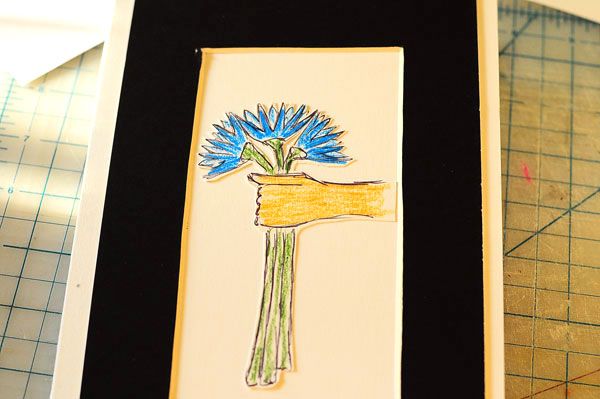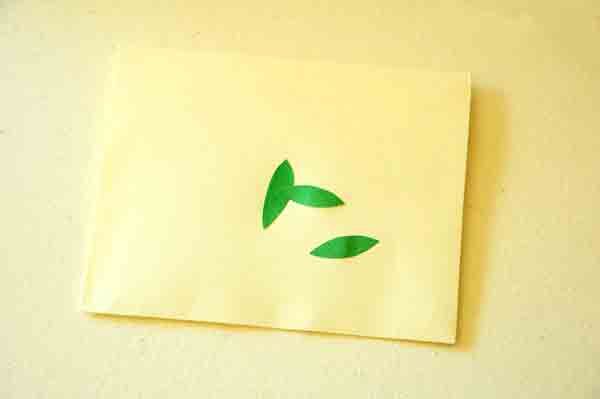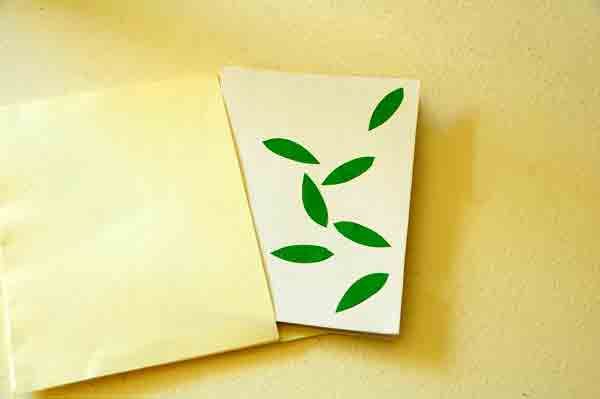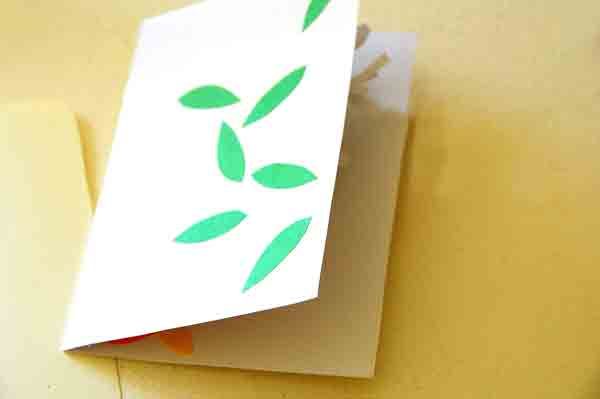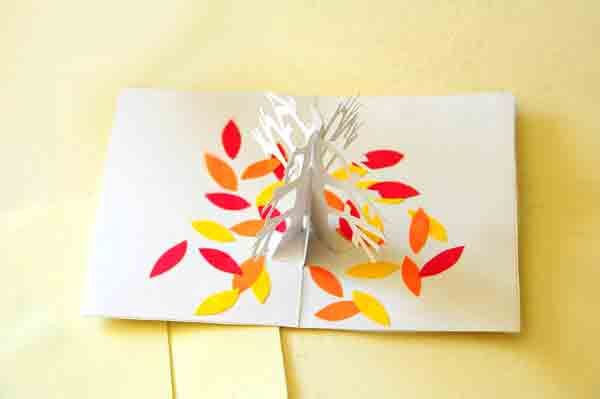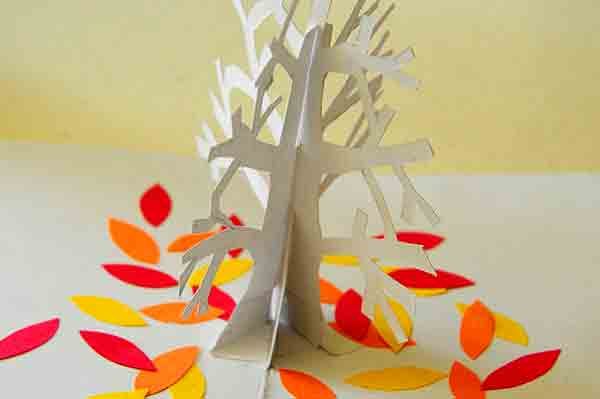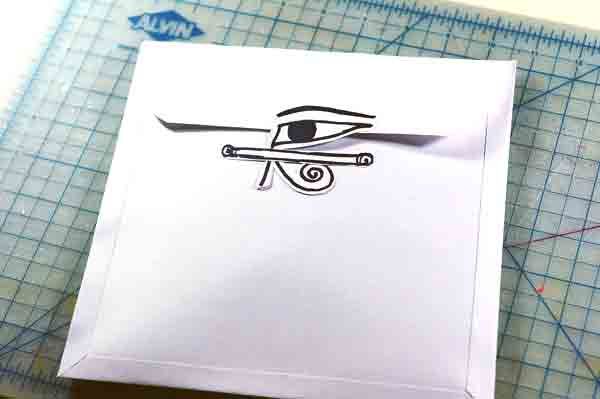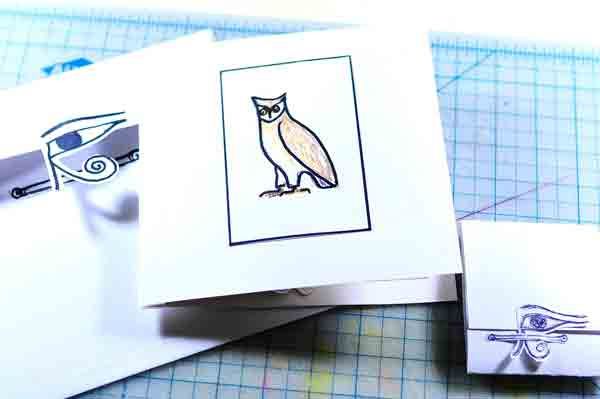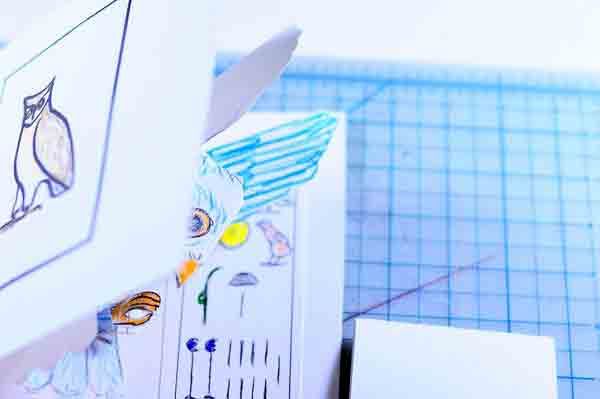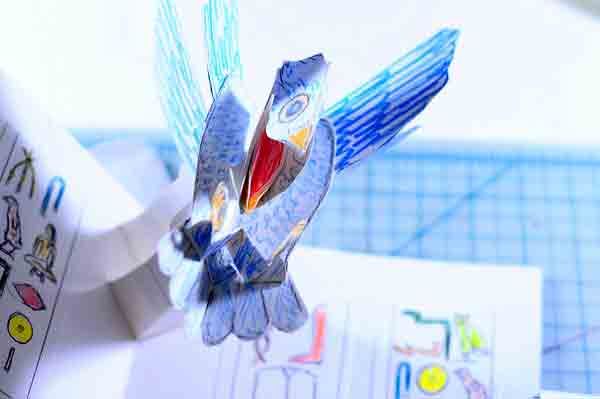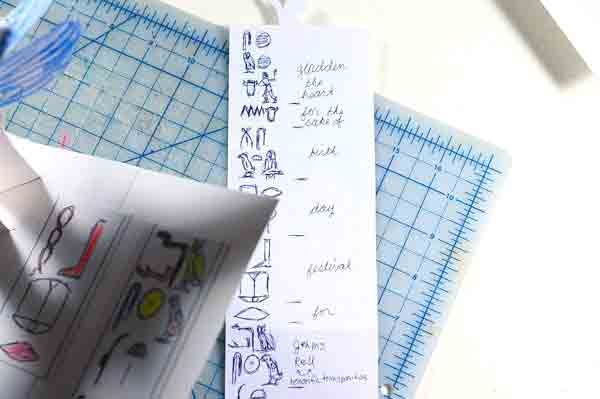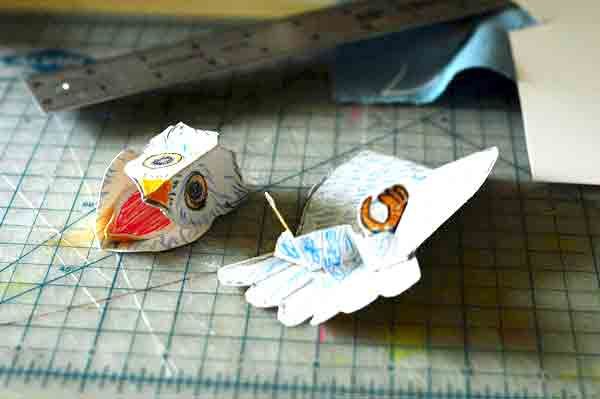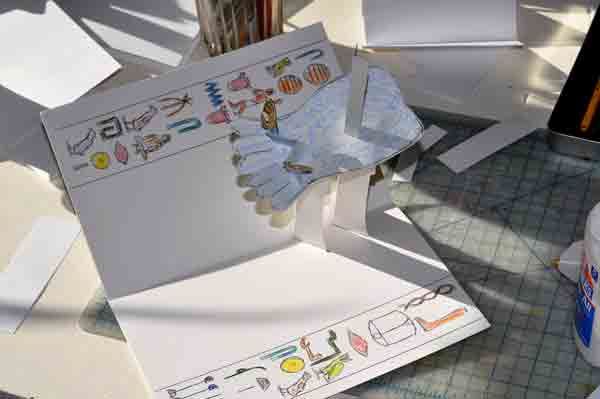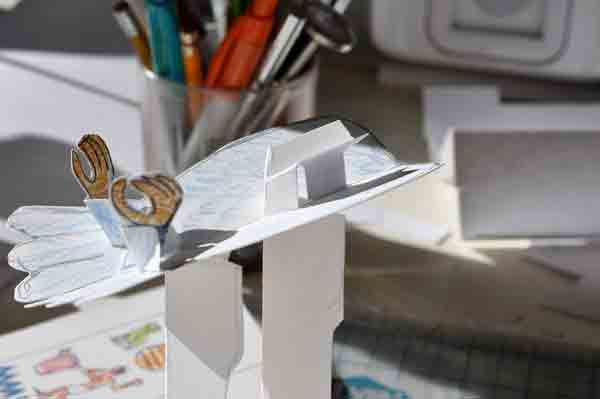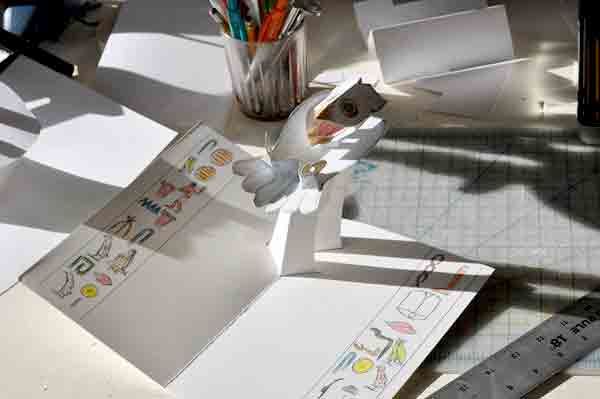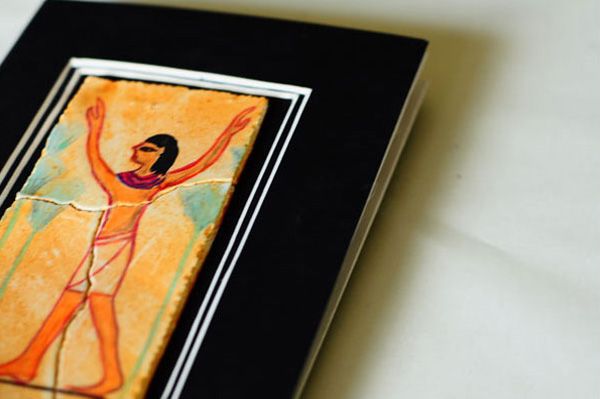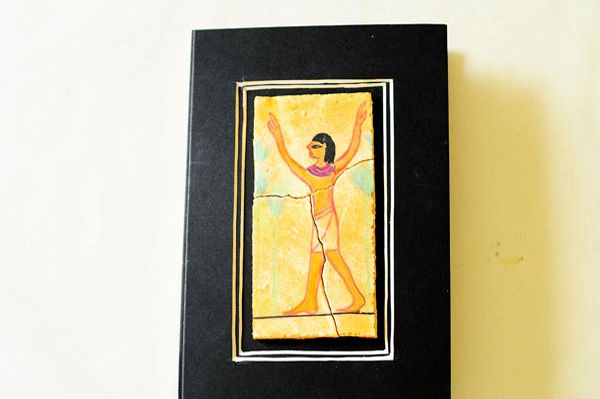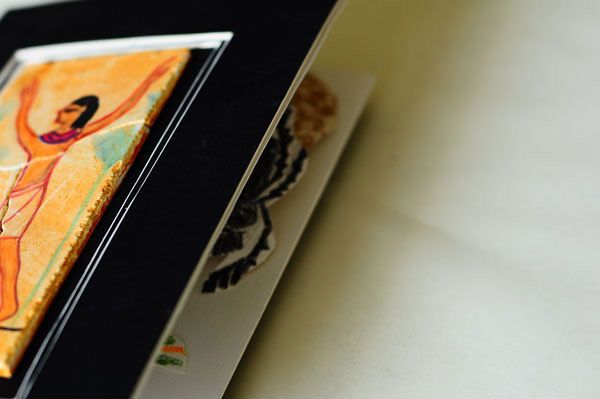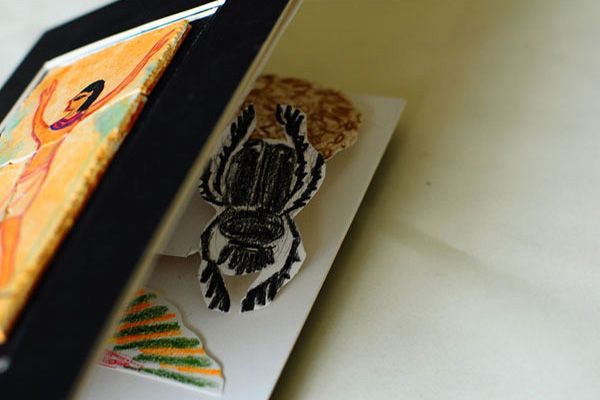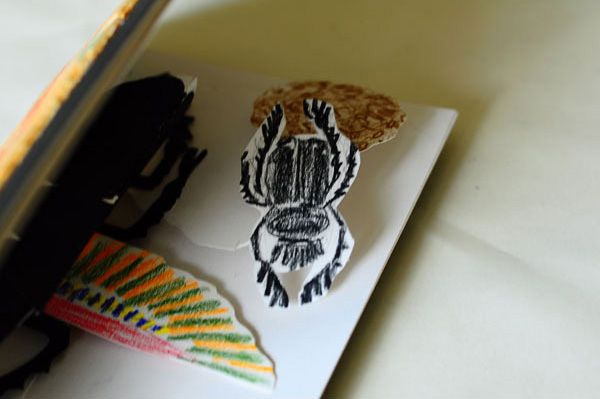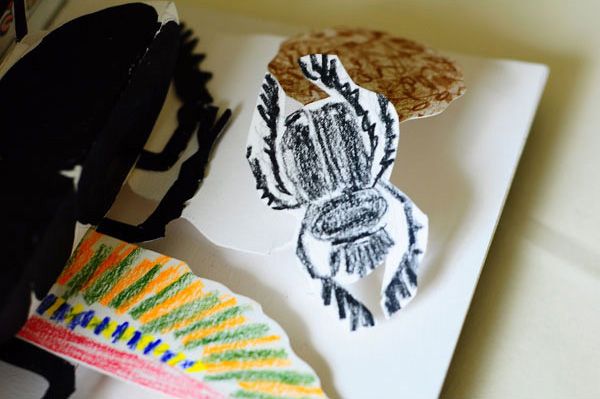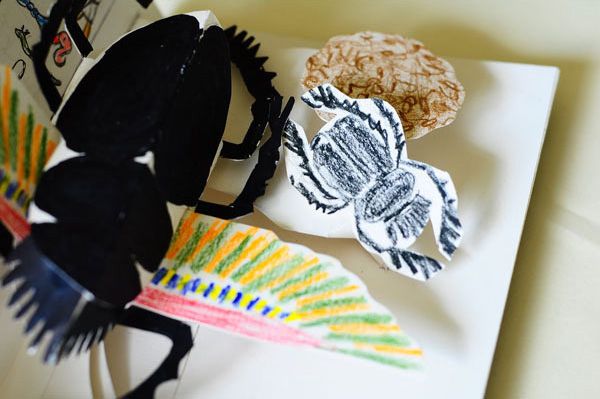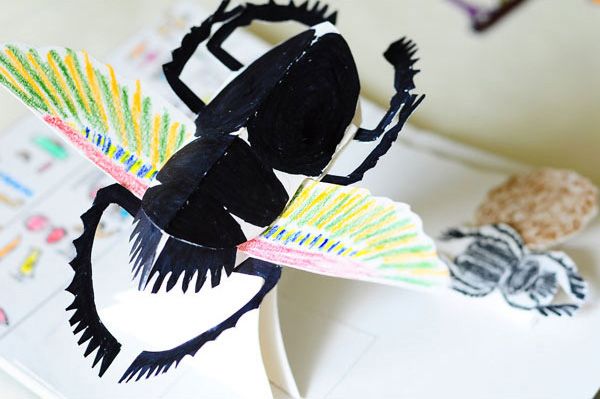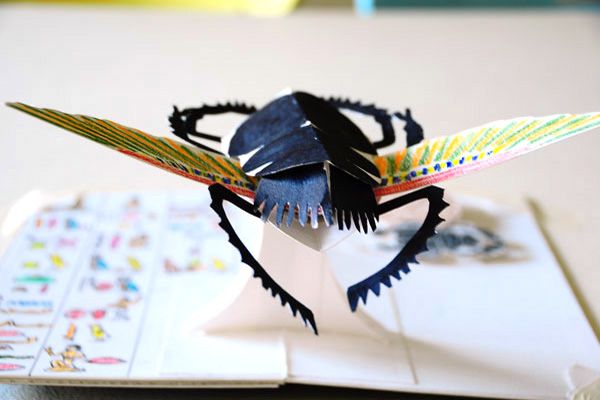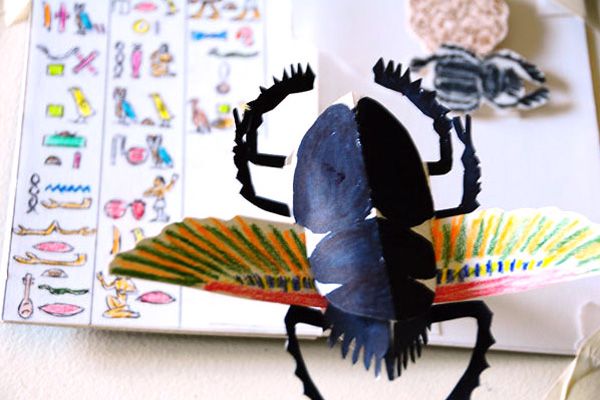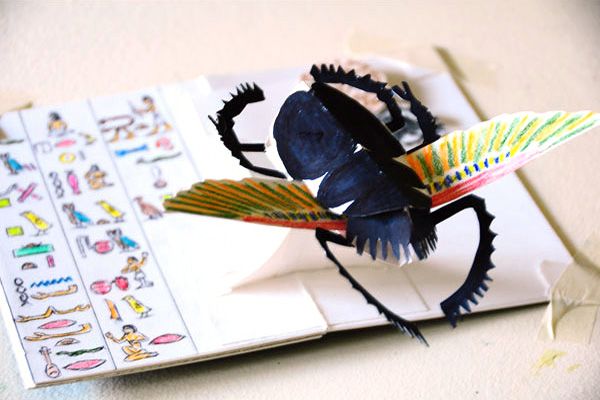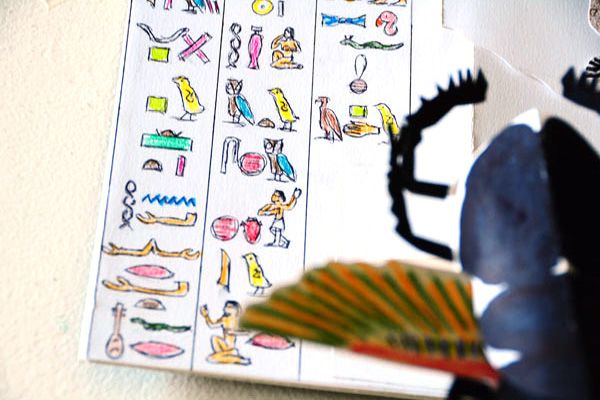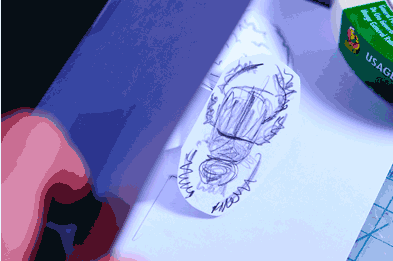This pop-up card depicts Egyptians celebrating around a modern style decorated birthday cake. The background of the card is hieroglyphics on the left describing the occassion for celebration with a translation in English on the opposing side.
There really isn't that much to the mechanism of the pop-up. It's based on a series of hexagram rings attached on two sides parallel to the central fold of the card. The outer band is the most narrow. Twelve figures and objects are attached to the band. The other two bands are broader and comprise the sides of the cake. The smaller ring is stacked on top of the larger ring, the roof if you like. The tops of the cake rings (the roofs) are hexagons with a central fold in alignment with and positioned directly above the central fold of the card, so that all three surfaces fold together, actually the movement of folding the card forces the stack of folds. There are different ways to construct this, either with a central spine with the tiered surfaces attached to it, or as here, with the tiered surfaces attached to separate stacks of I-bar constructions. The tops are attached to the rings with tabs that are aligned with the tabs holding the rings to the card also parallel to the central fold. Basically it's three concentric hexagon strips, two with lids and stacked. That is all.
I neglected to think about photographing until I was nearly done because I was zipping along. Therefore, I drew the following patterns to illustrate. The top pattern is 1/2 of a strip that forms a hexagon with a large tab that attaches it to the base of the card and a small tab to attach it to another strip identical to itself, the pattern is repeated five times for a total of six strips, but in three different sizes, the largest hexagonal ring, the outer one, is much more narrow than the other two and it holds the figures around the cake. Originally the idea was for a three tier cake but I saw I didn't have enough room so I settled for two tiers instead of arranging for a larger background. As it turned out, when I attached the figures I discovered my background was too small anyway which forced an adjustment for the outer cover, but by that time I was over making cake tiers. This is a problem that arises from not building prototypes, but I don't care. This card was a one-shot deal, I would just have to settle for whatever happened, unless it was a complete disaster, of course.
The figures were all scratched out as if drawing hieroglyphs. I drew guide lines to determine their height then just raced through unitl I had twelve. I didn't bother measuring anything. I determined if they were too broad to fit the segments, then I'd overlap them. They all have a very sketchy appearance.
The message reads:
Viewing the splendor of
The celebration of the drink festival
Making a day of rejoicing
In recognition of
A yearly event
The day of
The birth of
(birthday person)
Year 2009
|
The glyph for "birth" that depicts a baby dropping out head first with tiny arms extended from the bottom of a seated woman is avoided, even though it cracks me up every time I draw it and I do love sticking it in birthday cards. I must be growing up or something.
Incidentally, if you enter your name into an online hieroglyphic translator you'll get something a little bit different from how I might translate your name. The reason for that is all of the online translators are restricted to one-syllable glyphs to approximate the name sounds. They ignore available glyphs for two-syllable and three-syllable sounds which are abundant, as well as the occasional 4-syllable word that could be employed as rebus. In this case the name John would probably be translated automatically as DJ-ah-n (snake, Egyptian eagle, water zigzag), there is no proper J. But there is a sign for Dj-ah (fire drill), a savings of one glyph, although the cool snake and eagle is forfeited. Oddly though, as yet I haven't seen a glyph for ah-n, and I've checked every source available to me which is considerable, a common enough phoneme you'd expect to have it's own sign, or to have a word assigned to it. I haven't given up though, if I ever see one, believe me, I'll use it immediately.
